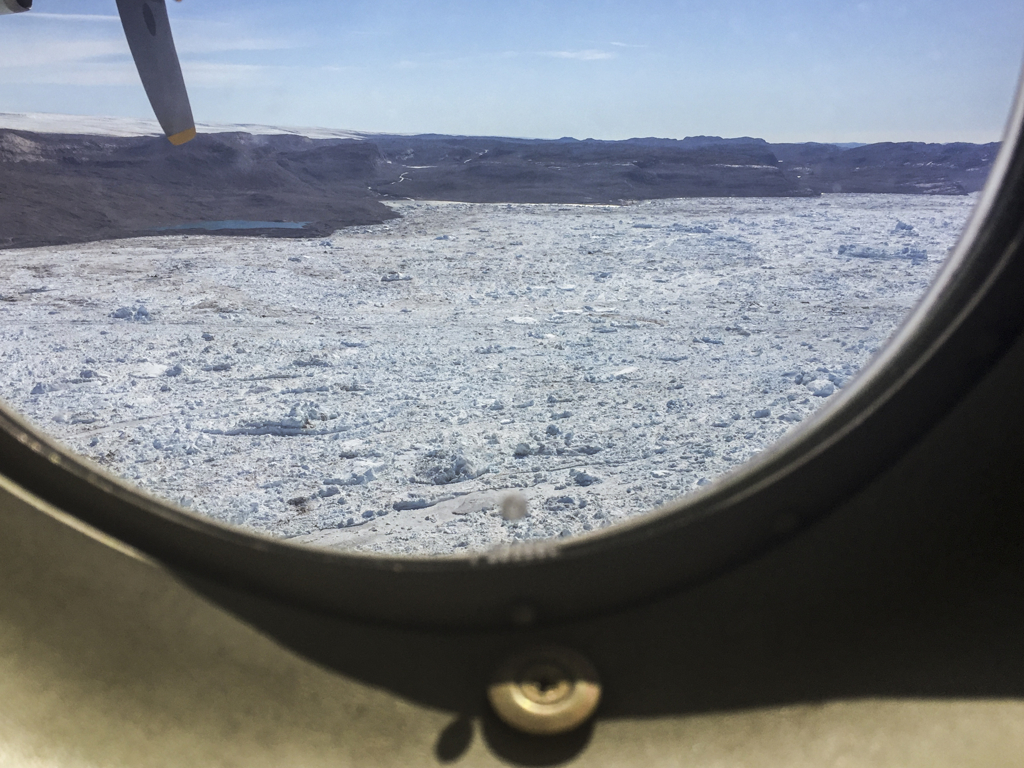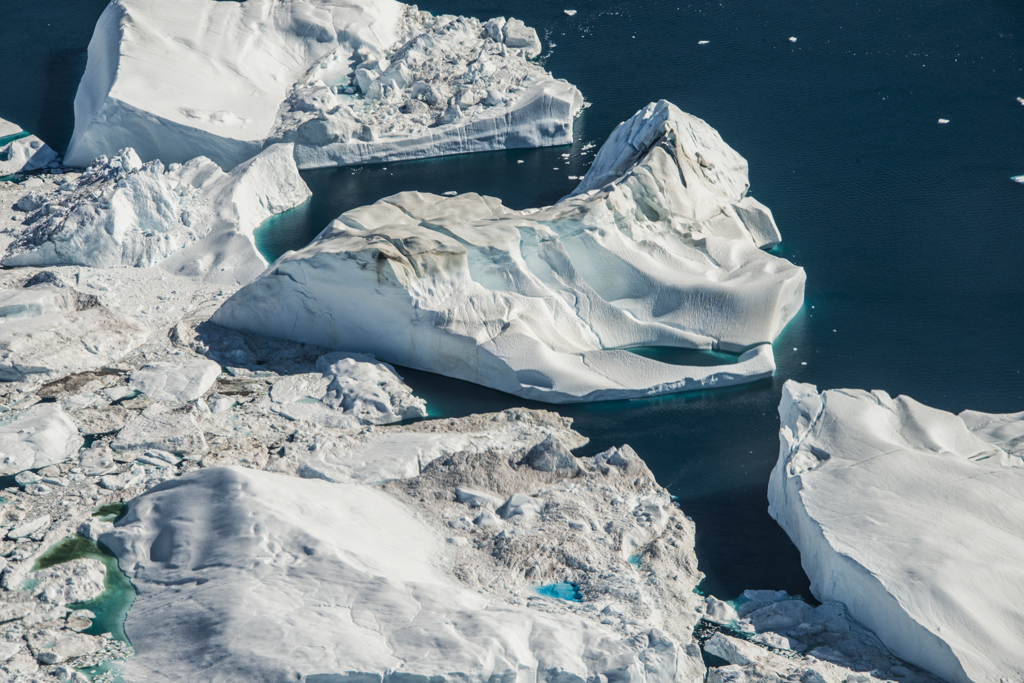Thursday, July 21, 2016
After breakfast, we gathered our luggage and waited for the C-130 Hercules to transport us back to Kangerlussuaq.
The C-130 would bring new visitors from The Alfred Wegener Institute and the University of Copenhagen to EGRIP for a brief tour of the camp and ice core drilling operations.
The EGRIP runway
Diana Vladimirova (surface scientist) and Chris Jacobs (mechanic who did the traverse from NGRIP to EGRIP on May 11th) were leaving EGRIP on this flight and their replacements were arriving.
At 1:00PM, we said our good-byes and boarded the plane.
A thin section of glacier ice placed between two crossed polarizers.
On the flight back, I met Professor Frank Wilhelms from the Alfred Wegener Institute - an ice core expert that maps the crystal grains in sections of glacial ice. The crystal structure contains data on how ice deforms when exposed to stresses, thus revealing the flow history of the ice. Another fascinating study inside of the ice core!
Most of the people on the flight back to Kangerlussuaq had never been to Ilulissat. As a result, our pilots decided to take the C-130 on a one-hour detour to give all of those aboard an aerial tour of the Jakobshavn Glacier, Disko Bay and Ilulissat areas.
Everyone was glued to the small round windows on the sides of the Hercules to get a glimpse of the scenery below. It is very unusual to have such a large aircraft traveling over this delicate environment.
We flew over the Jakobshavn Glacier, where the inlet was filled with small pieces of calved ice and icebergs spilling into Disko Bay.
Continuing our flight over Disko Bay, we headed southeast to Kangerlussuaq.
During my four-hour flight back to New York, my thoughts reflected on the Greenland landscape of 2016. This was my third trip to Greenland. How could I explain the visible transformation that the landscape had undergone since 2007?
I have studied charts and read the statistics about the increase in greenhouse gasses. I have listened to scientists speak about data that maps past atmospheres, temperatures, and sea level within ice cores. I have also read and listened to information on the rapid melt of Greenland’s ice sheet.
Nothing replaces visual impact.
The Greenland ice sheet near Ilulissat in 2007 was covered with white fluffy snow. Now the snow is intermingled with silt leached from the bedrock below. The same area in Greenland’s ice sheet had very few meltwater areas in 2007 - now, it is covered with meltwater lakes feeding into deeper moulins.
There were fewer icebergs in Disko Bay in 2007, but at that point they were much larger. Today, Disko Bay is filled with hundreds of small icebergs. The temperature in August of 2007 was 32 degrees F. On July 16, 2016, the temperature was 65 degrees F.
My next monograph and exhibition, The Arctic Melt, will feature this fragile and disappearing Arctic landscape. Also featured will be imagery from my trip to the Arctic in June of 2015, where I observed the melt in Svalbard, Norway and journeyed to the North Pole on a Russian Nuclear Icebreaker.
For upcoming news, please subscribe to my mailing list.






